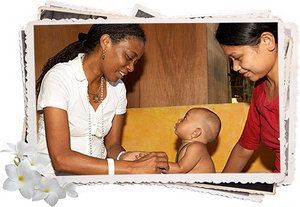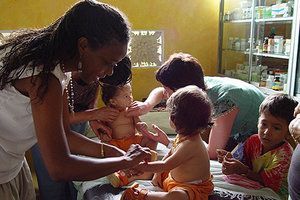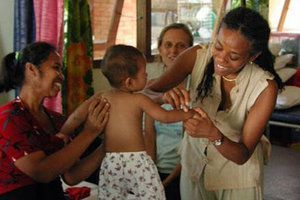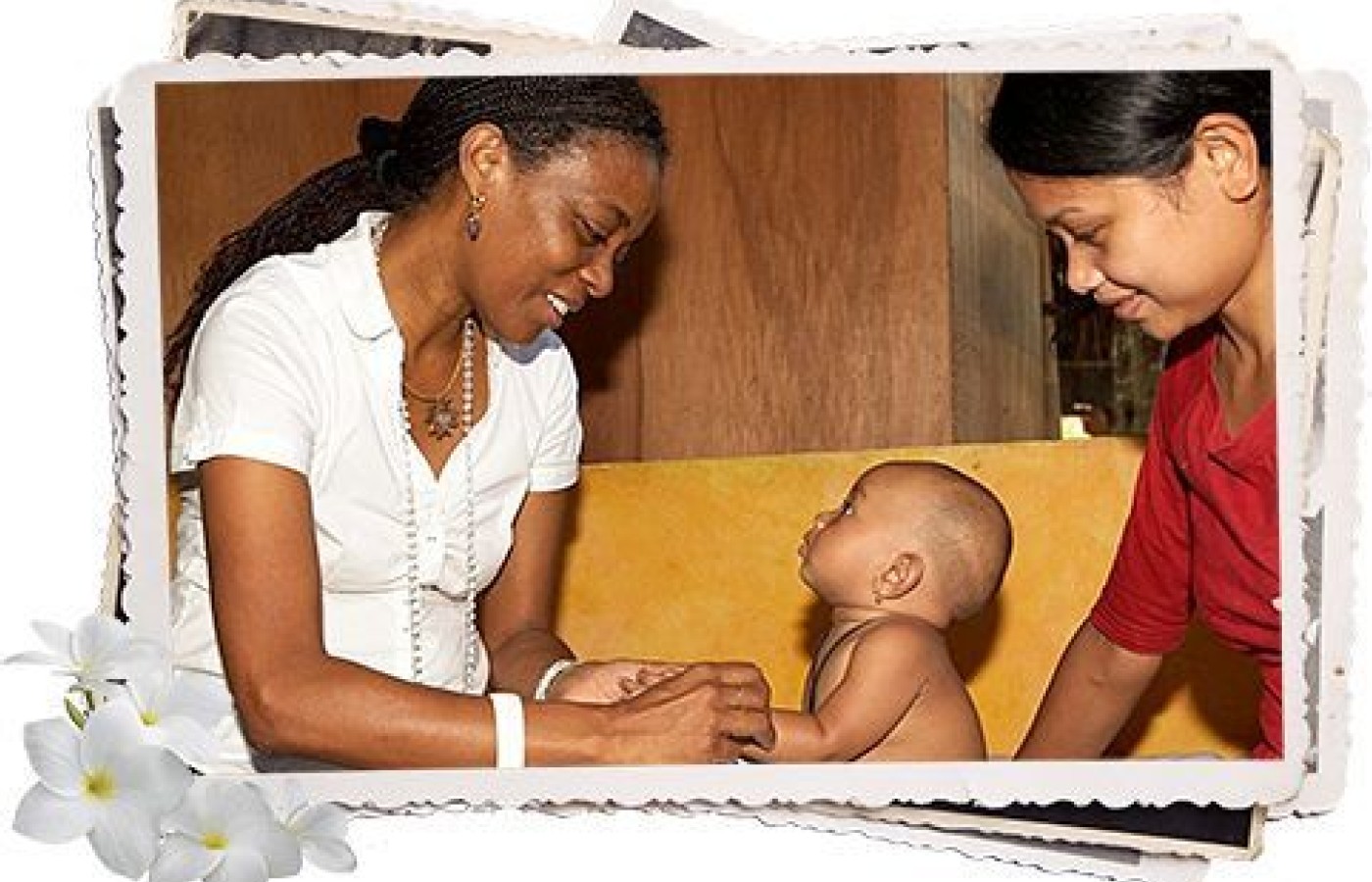Whether you accept it, avoid it or live somewhere in between, insurance coverage has become a defining issue for our profession. Patients increasingly expect to use their benefits, practitioners want to be compensated fairly for their time and expertise, and the system itself remains – at best – fragmented. The encouraging news is that coverage has expanded in meaningful ways. The challenging news is that reimbursement, across the board, remains inadequate.
Case Histories from Bali: Treating Balinese Chidren with TCB and Shonishin
When I moved to the island of Bali in 2005, I offered my services in Bumi Sehat, which means Healthy Mother Earth, a free birthing center for poor and disadvantaged local women located in Ubud. There I began working with newborns, infants and children one day a week, putting to use the pediatric sho-ni-shin techniques I had learned from Dr. Miki Shima and my experience in treating children in the West.
Sho-ni-shin is a Japanese acupuncture system used for treating children. It utilizes specially crafted tools of various sizes and shapes, which are used on the skin to create different types of stimulation along the meridian pathways and on acupuncture points. The sho-ni-shin is a hands-on treatment and does not create any discomfort for the child. It is quite effective in treating both mildly acute and chronic health problems. It can also be used once a month on healthy children for health maintenance and disease prevention.
Children in Bali are considered to be a most precious and sacred gift. Bali has the reputation of being a wonderful place to give birth and raise small children because they are so loved and cared for.
In the course of a morning at the clinic, I would treat 20 to 30 children who arrived from all parts of Bali. Volunteer translators assisted my work by handling the paperwork and filling the herbal prescriptions. This allowed me to rapidly move from one child to another. The children ranged in age from neonates to early teens.

Treating Babies
Babies can benefit from traditional Chinese medicine beginning immediately from birth. During the four years I worked regularly at Bumi Sehat, I treated a wide variety of cases and saw some amazing recoveries. Colic, glue-eyes, oozy umbilicus or a persistent yellow tinge of the skin and eyes were the most common pathologies I saw in neonates.
In Bali, and in many traditional cultures, a baby should ideally be confined to a room and the closeness of its mother during the first month of life while she is recovering from the birth by being pampered by other family members and given blood tonic herbs and good nutrition.
In Bumi Sehat, I would try to use only homeopathy or sacro-cranial therapy if a neonate's health needed attention. At one month old, a baby can start venturing out and safely receive acupuncture, sho-ni-shin or Chinese herbs. Of course, one can use acupuncture on a baby sooner if need be.
I saw a newborn suddenly break out in a blistery rash all over his body while I was at the clinic. I used a very thin needle and performed in and out insertions on the points LI11 (Quchi), GV 14 (Dazhui), SP 10 (Xuehai) and UB 40 (Weizhong) and the rash cleared away.
Treating Children
Acute respiratory and digestive problems, as well as skin outbreaks, formed the majority of the cases affecting children I treated. Colds often started with a high fever and tended to drop into the lungs. Because of the damp climate, coughs could linger for weeks or months. It was very rewarding to see how sho-ni-shin and Chinese herbal remedies could help.

Treating a child only takes 15 to 20 minutes, depending on his or her size. Two to three treatments of sho-ni-shin in the same week would usually be enough to resolve an acute exogenous invasion. But since I only saw the children once a week in the free clinic, it was helpful to leave vaccaria seeds or “seirin pyonex” junior intra dermal needles embedded in a few specific acupuncture points in between the treatments to keep the stimulation going. I also always complemented the energetic treatment with herbal therapy.
I kept in stock a few Chinese formulas in granular powder, which I've found most effective for acute cough patterns. For example, I used XIAO QING LONG TANG for wind-cold coughs accompanied with white sputum, clear runny nose, sneezing or wheezing. It works very well for children with an allergic constitution and a weak immune system.
For wind-heat coughs, I used SANG JU YIN WAN, which can easily be modified to suit different patterns. For phlegm-heat coughs, I used QING QI HUA TAN TANG when the phlegm was thick and yellow. For Lung fire, when the cough was barky, sharp, dry or spasmodic, I used QING FEI YI HUO PIAN in tablets. If the phlegm was sticky and hard to expectorate, I used QING FEI TANG in granular decoction. If a dry cough persisted after a prolonged fever or flu, I used SHA SHEN MAI MEN DONG TANG.
Sho-ni-shin shouldn't be used if a child had a fever, an acute infection or an extensive skin rash. Instead, I would perform in and out insertions with thin Seirin needles. I might also bleed jing-well points in order to rapidly clear the heat, send the child home with heat clearing herbs and instruct the parents to keep the child well hydrated. I would make sure to tell the parent to let me know if the fever had not abated within the next four hours or if the child's shen and energy suddenly seemed to drop.

In Bali, doctors routinely prescribe antibiotics whenever a child gets a fever. When a child with a weak qi has had repeated courses of antibiotics, (s)he often carries a lingering pathogenic factor (LPF). Some residual energetic pathogen lingers in the child's body after an illness involving an upper respiratory infection or inflammation. The child never completely recovers from the illness and it can persist through their entire life if left untreated. This dormant pathogenic factor blocks the flow of qi and the lack of lymph drainage traps the phlegm. This results in swollen and hard glands and predisposes the child to further infections. It can result in a persistent dry cough or recurrent sore throats or ear infections. It can also create emotional imbalances.
It is important to differentiate a LPF from a weak Lung and Wei Qi as in both patterns we would see recurrent infections. The LPF can be treated with XIAO CHAI HU TANG, which needs to be modified if given for long periods. For a weak immune system, YU PI FENG SAN combined with GUI ZHI TANG works wonders.
I have found the sho-ni-shin technique to be very effective in treating most chronic or mildly acute conditions in children up to 10 or 12 years of age. Most children, even restless toddlers, enjoy their sho-ni-shin treatments and become quite relaxed. When a child has a more pronounced qi or Yang vacuity, I use moxa in a tiger warmer on the related organ back-shu points as well as CV 12 (Zhongwan) and ST 36 (Zusanli)
Serious Cases
I saw many cases that would only be seen in a hospital in the West. Many of these children were brought in by their parents, after allopathic treatment or hospitalization failed to restore their health.
A father brought in his 3 year-old little boy who had been diagnosed with hemophilia. The father was rather distraught because in spite of the doctor's medicine (which I could not identify) and trying to keep the child from harm's way, the child kept getting large painful swellings on his knee whenever he bruised himself or he had to be rushed to the hospital frequently because he would cut himself in the mouth when eating drier foods.
According to TCM, holding the blood in the vessel is a function of the Spleen. Spleen qi vacuity includes easy bruising or reckless bleeding.
I decided to tonify the child's Spleen using sho-ni-shin and moxa on UB 20 (Pishu), ST 36 (Zusanli), SP 6 (Sanyinjiao) and REN 12 (Zhongwan). Of course, acupuncture needles are out of the question in a hemophiliac. I had no idea what to expect, but to my amazement and the father's delight, the boy's incidence of bruising and cutting himself were greatly reduced. I also prescribed BU ZHONG YI QI TANG and told the parents to use YUNNAN BAI YAO when the child had any minor scrapes. This drastically reduced the hospital visits. Two years later, a stronger and healthier child was getting ready to start school.
A 4-year old little girl had been coming to the clinic for four weeks with a congenital leaky heart valve. Through an international health organization, the parents had received monetary assistance and their daughter Gita was awaiting surgery to repair the heart valve. But it would be several months before it could be done. Meanwhile, the least exertion left her exhausted and short of breath and her fingers, nails and tongue were dark purple. Her appetite was poor and she got cold easily.
Little Gita was always cheerful and bright and seemed to love her sho-ni-shin treatment. I used moxa on CV 12 (Zhongwan), ST 36 (Zusanli), UB 13 (Feishu), 20 (Pishu) and 23 (shenshu) and some general tapping on her Lung and Heart channels. Her parents reported a steady improvement in her energy, appetite and cyanotic condition. Whenever she experienced a major drop in energy, the purple color would get stronger, a direct confirmation of the close relationship between qi and blood.
An anxious mother brought us her 3 year-old little boy. His growth seemed to have been normal up until the age of one when he should have started to walk, but he just refused to do so. Wayan (which means first born) was able to stand putting all his weight on the right leg. But when he tried to use the left side, he would just start to cry as if in severe pain. He was small for his age, shy and fearful and also had difficulty speaking. Upon examination, both the leg and the arm on the left looked more flaccid and emaciated than the right side. It took us a long time of probing to get the story that Wayan had been hospitalized when he was about five months old with a very high fever. He was given antibiotics, put on a drip for three days in the emergency ward and sent back home once the fever went down. He had seemed to recover so the parents forgot about it. I diagnosed the child with hemiplegia from wind stroke. The sequela only became apparent when the child should have started to walk and could not. This was a clear state of qi and blood vacuity induced paralysis with blood stagnation in the channels.
I prescribed the formula BU YANG HUAN WU TANG with the additions of HUAI NIU XI, XU DUAN, DU ZHONG and a small amount of QUAN XIE. I used sho-ni-shin and moxa on the following acupuncture points: GV 20 (Baihui), L.I. 10 (Shousanli), ST 36 (Zusanli) and HT 5 (Tongli) on both sides. GB 30 (Huantiao), GB 34 (yanglingquan) and UB 60 (Kunlun) using tapping on the right side and moxa on the paralyzed side.
In the beginning, the child was so afraid that I could not even get close to him. We instructed his mother to give him a daily massage and to start the herbal medicine. After three weeks, I was able to give him his first sho-ni-shin treatment and after three months of weekly treatments and massages in between, he was able to put some weight on his left leg. It took another three months before he started to tentatively walk. Today there are no longer any signs of the paralysis.
The opportunity to treat children helps us gain the trust of the whole family as the parent sees that the treatment does not create any trauma for the child and produces positive results. With Oriental Medicine, the diagnosis process consists of asking questions not only about the disorder but about the whole person, as well as looking and touching the patient.
Often, the healing starts just from being heard and listened to. Since the Oriental Medical doctor aims at finding the root cause of the ailment, diet, nutrition, emotions and lifestyle are questioned. This opens the door to help the patient become aware of the connection between their health and their lifestyle. The children who receive sho-ni-shin and Oriental Medicine regularly for minor ailments seem to need less drugs and antibiotics; and if they need to take them for a more severe illness, they'll recover faster and their system can be brought back to normal with a few sho-ni-shi treatments and a course of probiotics.
With sho-ni-shin, the children are not afraid of being treated and can build a good rapport and trust with their doctor, which is essential for healing to truly happen.



